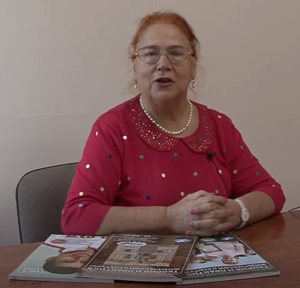Relationship of kinematic parameters of skate stroke techniques with the speed of movement of highly qualified skiers-racers and biathlonists
ˑ:
PhD A.S. Kryuchkov1, 2
Postgraduate student M.V. Volkov1, 2
Dr. Biol. V.L. Rostovtsev1
Dr. Hab. E.B. Myakinchenko1
1Federal Science Center of Physical Culture and Sport (VNIIFK), Moscow
2The Fеdеrаl Trаining Sроrts Center of the representative teams of Russia, Moscow
Objective of the study was to compare the correlation structure of the kinematic parameters of simultaneous one-step skating with the speed of movement among highly qualified cross-country skiers and biathletes.
Methods and structure of the study. Kinematic parameters of roller skating in 13 biathletes and 18 highly qualified cross-country skiers were recorded using video from May to October at each training event. The correlation structure of running in the two groups was studied after calculating the coefficients using the Pearson linear correlation method.
Results and conclusions. For skiers, unlike biathletes, speed is negatively related to the angles in the hip and knee joints, the lift-off angle of the poles, and the duration of free gliding. More closely - and negatively - the time of pushing off with arms and legs. For skiers, speed is positively related to the frequency of steps, for biathletes (more closely) to the length of steps, as well as (negatively) to the time of desynchronization between the beginning of pushing off with hands and feet. The path covered during repulsion with hands and feet, as well as the time of free sliding in both teams, is positively related to speed and with the same strength of relationship.
Keywords: cross-country skiing, biathlon, highly qualified athletes, kinematic parameters, technique, skating.
Работа выполнена в рамках государственного задания ФГБУ ФНЦ ВНИИФК № 777–00001–24–00 (тема № 001–22/5).
References
- Myakinchenko P.E., Adodin N.V., Missina S.S. Pokazateli fizicheskoy podgotovlennosti lyzhnikov i biatlonistov vysokogo klassa [Indicators of physical fitness of high-class skiers and biathletes]. Fizicheskoye vospitaniye i sportivnaya trenirovka. 2022. No. 2(40). pp. 37-44.
- Kryuchkov A.S., Volkov M.V., Rostovtsev V.L., Myakinchenko E.B. Pokazateli kinematiki konkovogo khoda vysokokvalifitsirovannykh biatlonistov, otlichayushchikhsya po reytingu IBU [Indicators of skating kinematics of highly qualified biathletes, differing in IBU rating]. Nauka i sport: sovremennyye tendentsii. 2023. Vol. 11. No. 4 pp. 6-12.
- Kucherov Yu.Yu. Analiz i sistematizatsiya informativnykh kinematicheskikh kharakteristik tekhniki konkovogo lyzhnogo khoda vysokokvalifitsirovannykh sportsmenov [Analysis and systematization of informative kinematic characteristics of the skating skiing technique of highly qualified athletes]. Vesnik Vitsebskaga dzyarzhaunaga universiteta. 2023. No. 2(119). pp. 69-74.
- Pellegrini B., Zoppirolli C., Boccia G. Cross-country skiing movement factorization to explore relationships between skiing economy and athletes skills. Scandinavian Journal of Medicine & Science in Sports. 2018. Vol. 28. No. 2. pp. 565-574.
- Stoggl T., Bishop P., Hook M., Willis S., Holmberg H.C. Effect of carrying a rifle on physiology and biomechanical responses in biathletes. Med. Sci. Sports Exerc. 2015. Vol. 47. No. 3. pp. 617-624.



